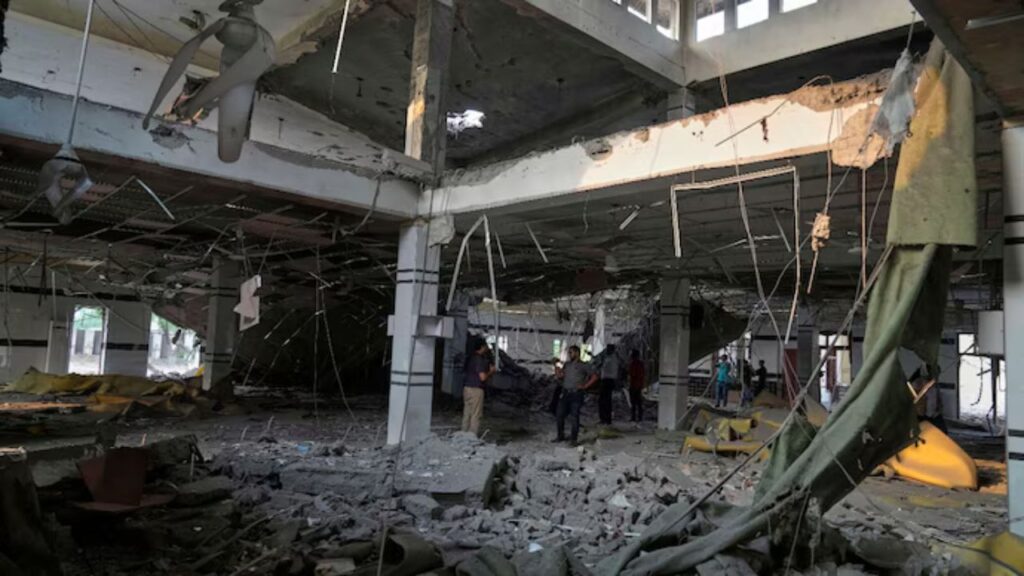A brutal militant attack on April 22 in the serene hills of Pahalgam, Jammu and Kashmir, left a honeymooning couple devastated, with the husband abducted and killed. Forensic evidence revealed the bullets used in the assault were manufactured in Pakistani state factories, and satellite phones linked the attackers to ISI handlers in Muridke. This audacious act of terrorism, orchestrated across the Line of Control (LoC), ignited India’s resolve, leading to the launch of Operation Sindor in early May. This meticulously executed military campaign dismantled Pakistan’s terror infrastructure, exposed its vulnerabilities, and redefined India’s strategic stance in the region, marking a pivotal moment in the fight against cross-border terrorism.
The operation kicked off with Surgical Dawn on May 7-8, showcasing India’s military precision. At 3:17 AM, Indian Air Force Rafale jets, supported by indigenously developed Raphe mPhibr drones launched from Rajasthan, crossed the LoC to strike nine key terror nerve centers. These included Lashkar-e-Taiba’s (LeT) headquarters at Markaz Taiba in Muridke and Jaish-e-Mohammed’s (JeM) fortified base in Bahawalpur.
Wing Commander Vyomika Singh, a key planner, emphasized the operation’s restraint: “We had strict orders to target only terror infrastructure, avoiding military assets to prevent escalation.” The strikes destroyed training camps, arms depots, and communication hubs, severely disrupting the operational capabilities of these groups. Real-time imagery from the Indian Space Research Organisation (ISRO) later confirmed the pinpoint accuracy of the strikes, with minimal collateral damage, underscoring India’s commitment to precision.
Pakistan’s response, Operation Bunyan-un-Marsoos, launched on May 9, was a poorly coordinated counteroffensive that collapsed under India’s defence capabilities. This failure prompted India to escalate its campaign in Phase 2, dubbed Breaking the Backbone, from May 9-10.
Indian forces expanded their targets to 16 sites, including airbases at Attock and Hyderabad in Sindh. The results were devastating for Pakistan: six F-16 jets, a Swedish Erieye surveillance aircraft, and ten Turkish-supplied Bayraktar drones were obliterated.
India’s S-400 missile defense system proved its worth, intercepting four rockets aimed at New Delhi, ensuring the capital remained unscathed. The operation highlighted India’s technological edge, with indigenous systems like the Raphe drones and S-400 defenses showcasing the success of the ‘Make in India’ initiative. The destruction of Pakistan’s air assets weakened its military and exposed its dependence on foreign equipment.
The conflict extended into the realm of cyber warfare, where Pakistan’s APT36 hacking group flooded Indian servers with fabricated vaccine data to sow chaos and undermine trust in India’s public health system. Pro-Pakistan social media accounts amplified the disinformation, recycling 2019 Balakot strike footage to claim Indian jets were downed.
India’s decision to withhold ISRO’s real-time strike imagery for 72 hours, citing strategic concerns, allowed Pakistan’s propaganda to gain temporary traction. This pause highlighted a critical challenge: in modern warfare, controlling the narrative is as crucial as dominating the battlefield. Jyotishman Bhagawati, a senior analyst at the Institute for Defence Studies, told The Chronicle, “Operation Sindoor shattered Pakistan’s terror shield and its nuclear blackmail myth, but without winning the information war, India’s victory is incomplete.”
Diplomatically, India faced intense pressure. U.S. envoy Eric Garcetti privately linked a ceasefire to trade incentives, a move New Delhi saw as an attempt to weaken its resolve. Pakistan’s Foreign Minister further muddied the waters by thanking former U.S. President Donald Trump for “mediation,” a claim India dismissed as a “dangerous fantasy” designed to misrepresent the conflict. The Ministry of External Affairs issued a sharp rebuttal, emphasizing that action against terrorism is non-negotiable.
The operation also exposed weaknesses in Pakistan’s alliances: China provided only tepid support, cautious of escalating tensions with India, while Turkey faced international criticism for resupplying drones to Pakistan mid-conflict, further isolating Islamabad.
Operation Sindoor reshaped South Asia’s geopolitical landscape. India’s suspension of the Indus Water Treaty, a bold retaliatory measure, triggered water shortages in Pakistan’s Punjab province, highlighting India’s willingness to use economic and environmental leverage. Prime Minister Narendra Modi articulated a new doctrine: “Any terror strike will be met with conventional retaliation, no exceptions.” This policy shift marks a departure from India’s traditionally defensive posture, establishing a proactive approach to deterrence that prioritizes national security.
The operation faced challenges, notably the delay in releasing ISRO imagery, which allowed Pakistan’s disinformation to spread temporarily. Turkey’s role in supplying drones raised concerns about third-party actors fueling regional instability, potentially complicating India’s relations with Ankara. The suspension of the Indus Water Treaty, while effective, risks long-term diplomatic fallout, as Pakistan may seek international arbitration. Yet, these hurdles are overshadowed by Operation Sindoor’s achievements. By dismantling terror hubs and neutralizing Pakistan’s air capabilities, India avenged the Pahalgam attack and debunked the myth that Pakistan’s nuclear arsenal could shield it from conventional retaliation.
Operation Sindoor underscored India’s growing military and technological prowess. The seamless integration of indigenous drones, advanced missile defenses, and satellite intelligence reflects a self-reliant defense ecosystem. The operation also demonstrated exceptional inter-agency coordination, with the Indian Air Force, Army, and intelligence agencies working in unison. However, the information war remains a critical frontier.
The tragedy in Pahalgam became a catalyst for India’s resolute stand against terrorism. Operation Sindoor is more than a military triumph; it is a testament to India’s commitment to its citizens’ safety. By dismantling Pakistan’s terror network and exposing its vulnerabilities, India has redrawn the map of power in South Asia. The operation’s legacy will be measured not only in the destruction of terror camps but in India’s ability to sustain its strategic momentum, counter disinformation, and secure its borders against future threats.

















